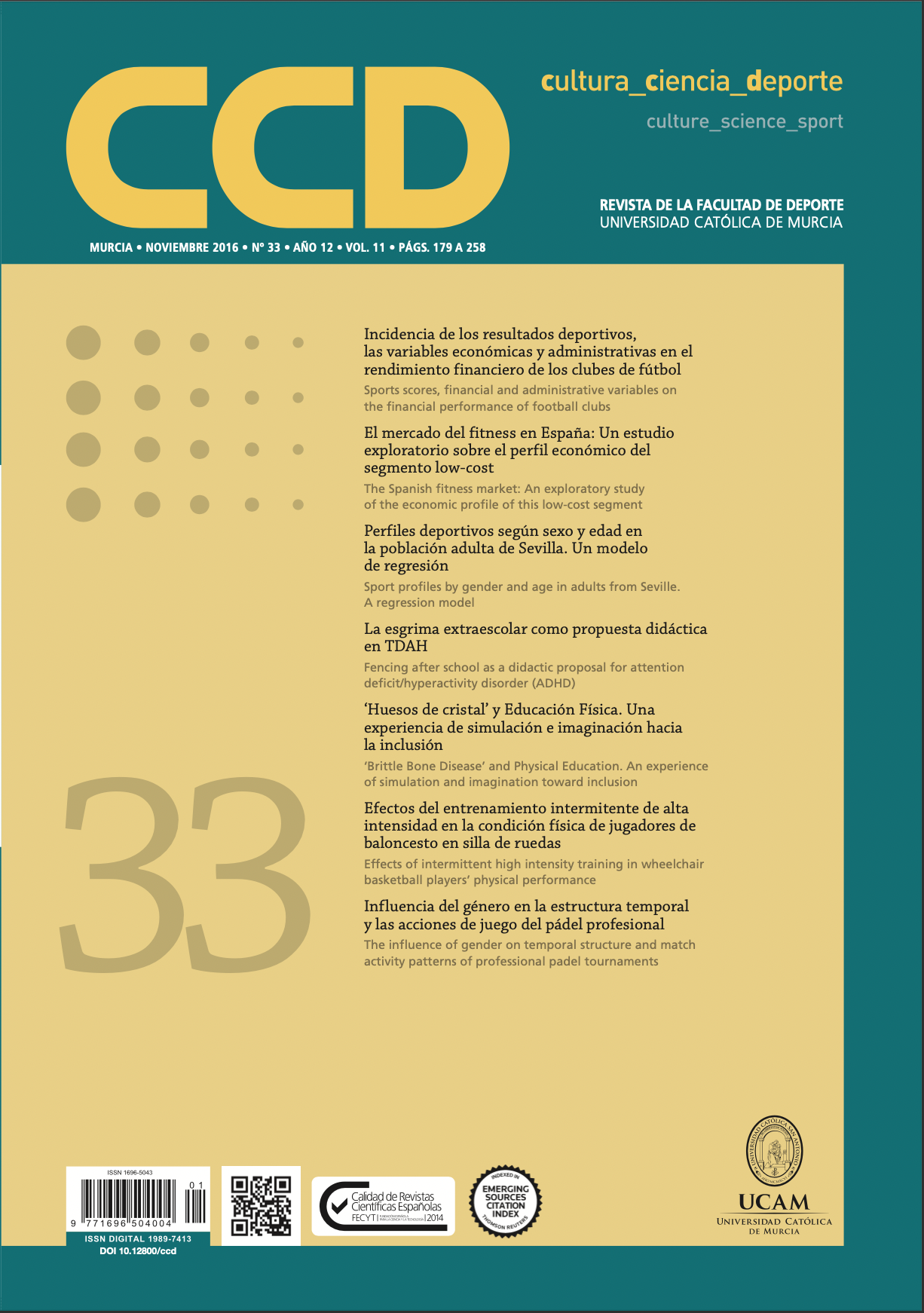La esgrima extraescolar como propuesta didáctica en TDAH. (Fencing after school as a didactic proposal for attention deficit/hyperactivity disorder (ADHD)).
DOI:
https://doi.org/10.12800/ccd.v11i33.766Abstract
El Trastorno de Déficit de Atención con Hiperactividad (TDAH) presenta una prevalencia representativa en las aulas y unas necesidades educativas especiales. El objeto de este estudio preliminar fue determinar el impacto de un programa de entrenamiento de esgrima en la frecuencia de conductas asociadas a síntomas conductuales del TDAH en menores diagnosticados con este trastorno. Los participantes fueron 18 menores (edad: M = 10.94, DT = 1.25), la mitad de ellos asistieron a clases de esgrima durante ocho semanas, mientras el otro grupo no participó en el programa. Se utilizó un diseño cuasi experimental con grupo de control no tratado con muestras pretest-postest dependientes. El instrumento de evaluación utilizado fue la Escala adaptada Iowa- Conners para padres (Miranda, Amado, & Jarque, 2001). El grupo que recibió entrenamiento de esgrima reflejó una frecuencia menor de inquietud y movimiento respecto al grupo control, además de menos problemas para centrar su atención. Estos resultados ofrecen información relevante para la intervención psicológica de menores con este trastorno y aplicaciones prácticas del entrenamiento de esgrima en el aula de educación física.
Palabras clave: Atención, hiperactividad, deporte, esgrima, educación física.
===
Abstract
Attention Deficit/Hyperactivity Disorder (ADHD) is prevalent in a typical school classroom and in special educational needs generally. The purpose of this pilot study was to determine the impact a fencing training program can have on the frequency of ADHD behavioral symptoms in children diagnosed with this disorder. Participants included 18 children (age: M = 10.94, SD = 1.25), half of them attended fencing classes for eight weeks, and the other group did not participate in the program. A quasi-experimental design was used with a control group not treated with pretest-posttest dependent samples. The instrument used was the adapted Scale Iowa-Conners for Parents (Miranda, Amado, & Jarque, 2001). The group receiving fencing training showed a lower frequency of restlessness and movement than the control group, and less problems maintaining attention. These results provide information relevant to the psychological intervention of children with the disorder, and for practical applications of fencing training in physical education.
Key words: Attention, hyperactivity, sport, fencing, physical education.
Downloads
Published
How to Cite
Issue
Section
License
The authors who publish in this journal agree with the following terms:
- The authors retain the copyright and guarantee the journal the right to be the first publication of the work as well as licensed under a Creative Commons Attribution License that allows others to share the work with recognition of the authorship of the work and the initial publication in this journal.













